LDS Membership Statistics April 2016
Here are some data, charts, and analysis for the new LDS membership statistics for 2015, announced April 2, 2016 in general conference. Raw data can be found on the church’s site and this wikipedia site. NOTE: a new update is ready. Click for the 2017 Membership statistics, reported 4/1/2017.
Total members of 15,634,199, raw growth of 1.7% on prior year.
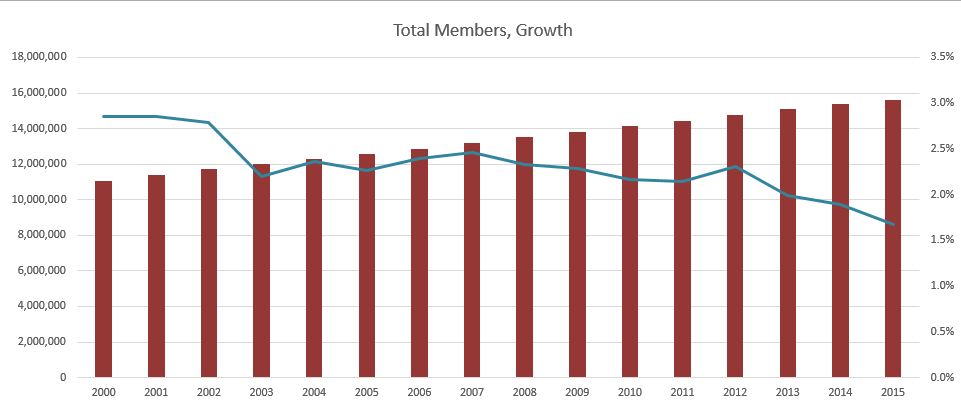
Unit growth (total wards and branches) is what I think is the best number to look at real growth, ie growth in active membership. This was at 1.33%. This has been trending up the last few years, most likely due to increase in missionary force. It’s difficult to derive true activity numbers. I think it’s best to use unit growth, but there may be shocks in the data, such as changes in strategy in terms of number of desired number of active members per wards, differing strategies in small branches, etc.
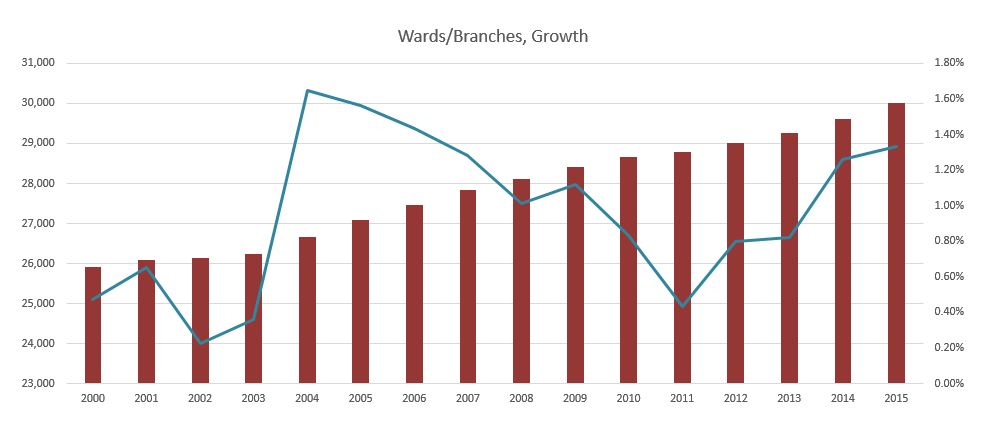
Stake growth is also a good indication of active membership growth, however it is more subject to shocks in the data set compared to wards-units, due to the smaller number of stakes.
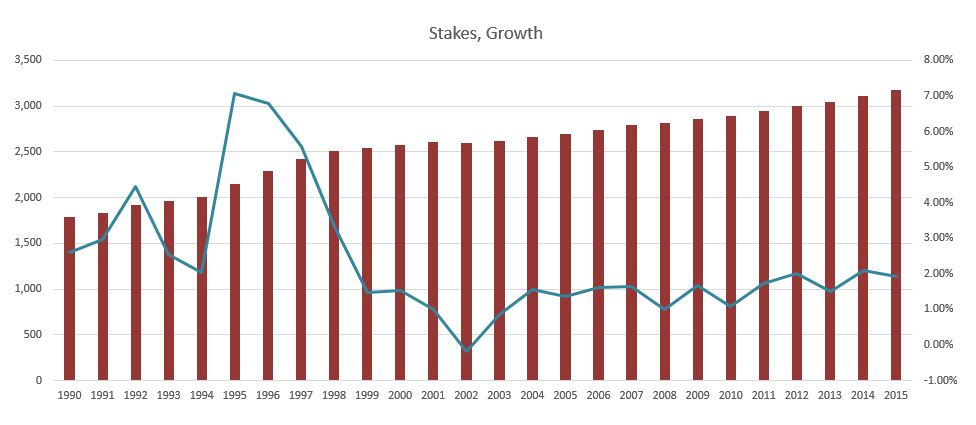
This is estimated, based on a simple model I created–based on a more complex model feeding the assumptions. I did a one time analysis of 30 year membership data from 1975 to 2004 and derived an estimate of 175 active members per ward/branch. I have used that 175 figure going forward as a simple estimate for active members, ie 175 * total wards/branches. Current activity is estimated at 33.6% with 5,252,800 members.
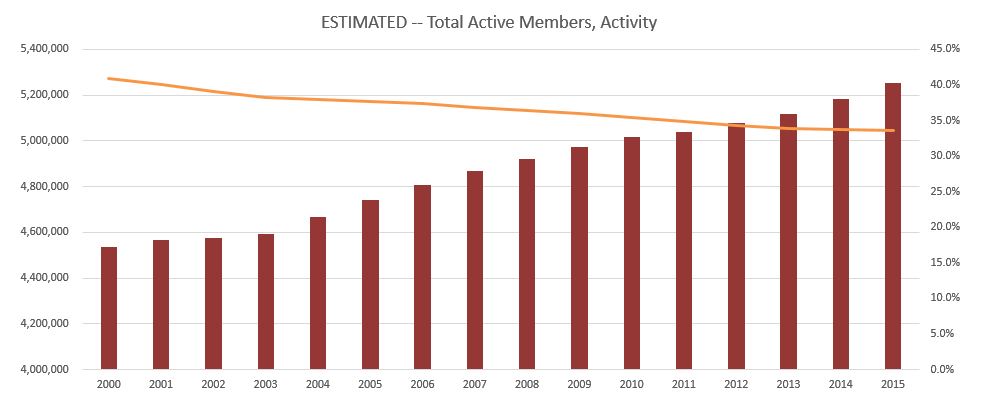
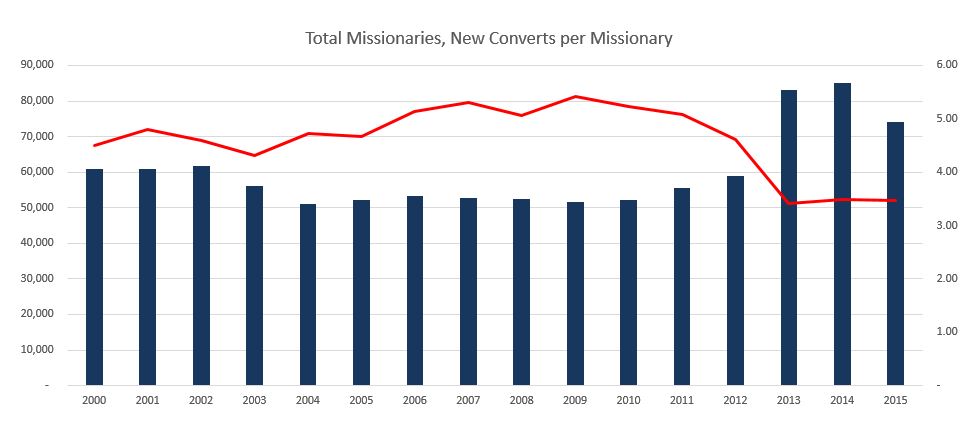
Because of the publicity surrounding the mass resignations late in 2015, this is a number people are talking about. The church does not publish this figure. It is a category derived by comparing total members last year, with total members this year, combined with the new converts and new children of record figures the church publishes. The category combines deaths, excommunications, and resignations. Complicating the data is the practice that the church keeps inactive members that can’t be located on the books until they reach age 110, so it’s difficult to estimate death rates. Additionally, it seems the church changes methodology of membership tracking from time to time and occasionally does a ‘true up’, because this plug number has varied widely from year to year for the past 20 years. I put together a model, using assumptions based on death rates, estimated total members in age bands, split between active and inactive. This is my best guess at splitting the plug number between deaths (orange) and excommunications/resignations (blue).
Because the data didn’t come out cleanly (obviously, since some years total resignations are negative and some they change wildly from year to year), I smoothed the data out in a new data set and displayed the trend for that. This is my final, best guess at the number of excommunications/resignations per year, with 2015 coming in at 58,385.
Post-publication edit:
This 58k excommunications/resignations figure is a little controversial. Exmo’s think it’s too low and TBM’s think it’s too high. Go figure. I looked again at my modeling, and tried to go back to older data to establish a better starting place that could be trended out for deaths. The church started reporting on children of record in 1997, and that’s required in order to derive the plug for deaths/resignations. But the data is just not clean enough to make much sense of it. After doing more analysis, my gut feel is if anything the 58k number might be a little high, but I don’t feel confident of that to revise it.
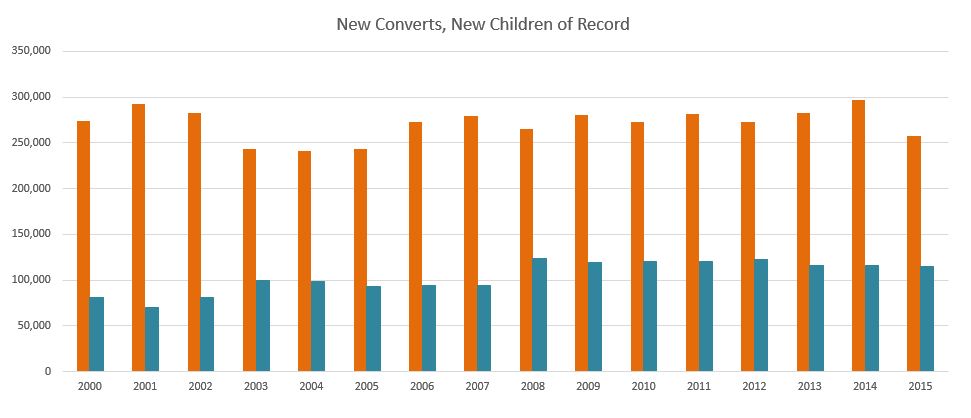
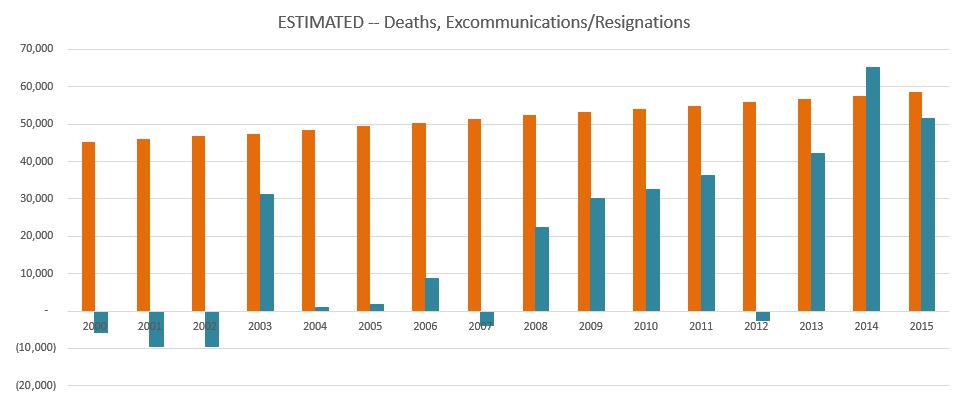
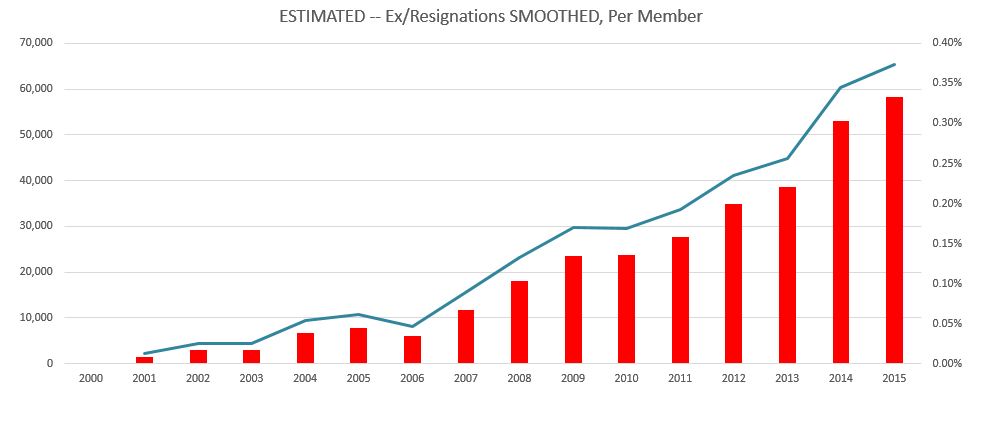
Nathan Fife
Really interesting post, thank you for working in this!
BryanJensen
More ‘line in a sand’ disaffiliation numbers will always be a hot point, but the more revealing trend is the attrition rate of ‘activity’. This accords generally with the low numbers seen in LDS self-identity based sources like govt censuses (US and foreign) and self-identification inference-samplers like the Pew Forum and ARIS. These numbers always contrast sharply with what the LDS church reports to organizations like Glenmary (GRC).
The missionary force bump will be an unsustainable outlier, too, and I think a less probable explainer variable for ward growth than other organizational structural strategies they’ve been pursuing.
BarryObama2014
I don’t buy it, most people who resign have been inactive for years or decades it’s impossible to predict their numbers unless the church releases it’s numbers.